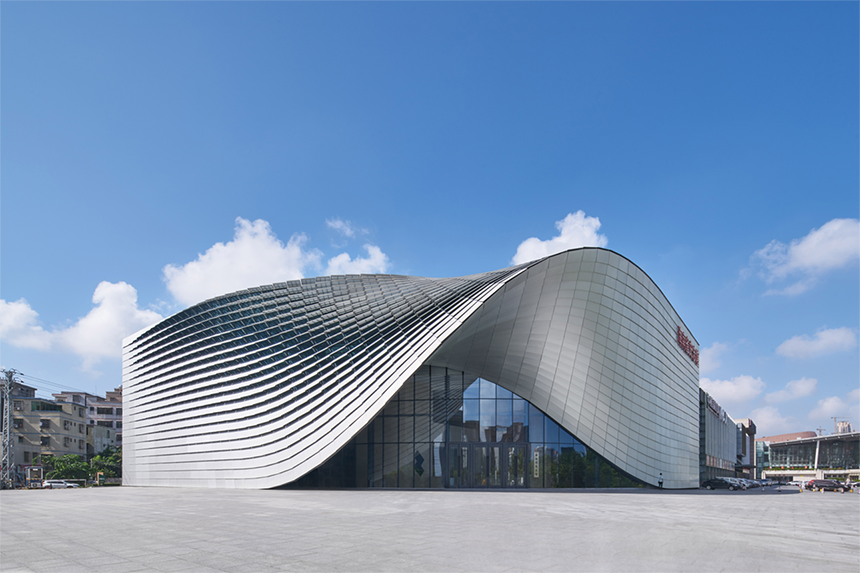
Hainan History Museum
Hainan, Haikou
The project is located in the southeast corner of Hainan Culture and Sports Park. Here is a concentrated expression of the conflict between two urban environments-the corner formed by shanty towns and landscape green spaces-on one side is the main urban road with a strong sense of order, on the other side is Crowded shanty towns lacking unified planning. Although the old and new urban spaces are adjacent to each other, the separation of scale, mechanism, and urban features creates contradictions that are difficult to reconcile on both sides of the plot. How to deal with the complex site conditions and the negative urban environment, and to create an open exhibition-type urban public building on such a corner of the city is the core challenge of this design.
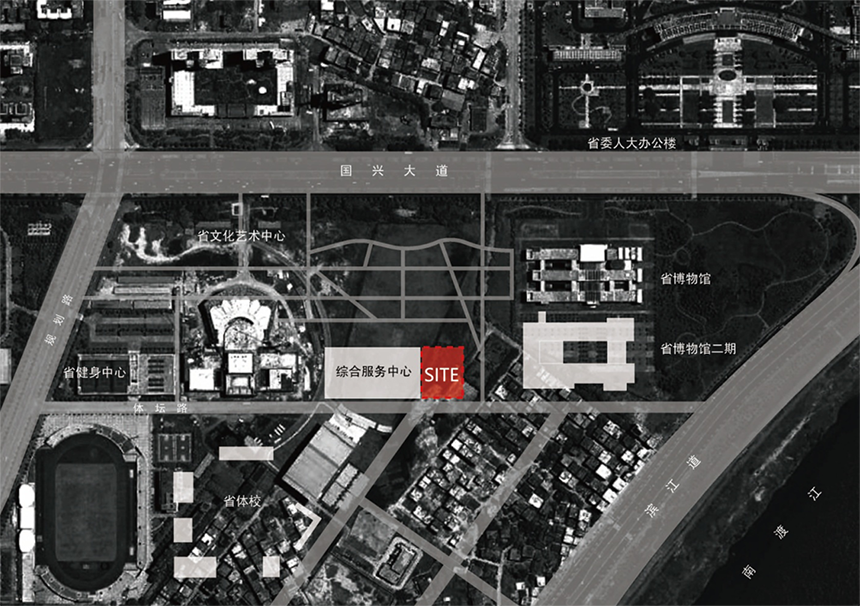
▲Project location map
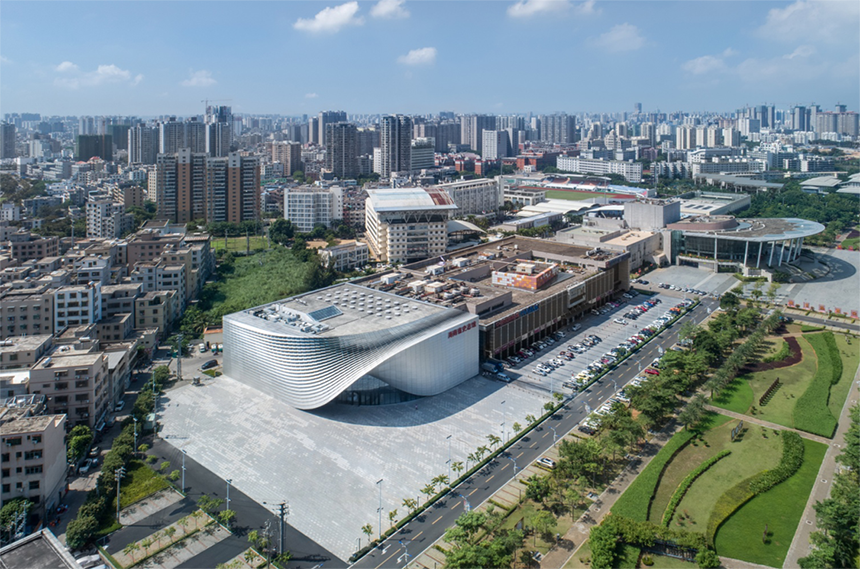
▲Complete the actual picture
We did not directly respond to the contradictory and negative site conditions, but used a powerful building to break through the shackles of the surrounding bad environment. Use this as a "magnetic pole" to enhance the quality of urban space.
We made the main building condensed in the southwest corner of the plot, and even attached to the adjacent integrated service center. This retreat action fully released the corner on the northeast side of the plot, forming an open and friendly urban public space in the direction facing the provincial museum. Next, a twisted curved surface based on the Mobius ring is used to connect the spaces on both sides to shape the building shape. This shape not only creates an impressive city image for the building, but also creates an interesting spatial form.
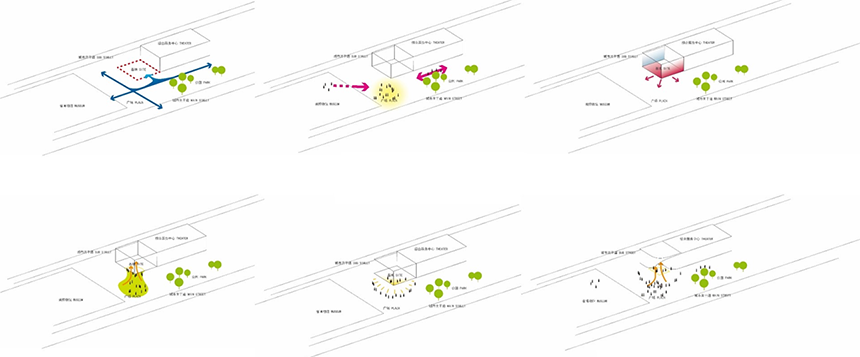
▲Shape generation diagram
The smooth and fluent curved surface shows great tension. It continues the urban facade in two directions and then deforms and dissolves them, blurring the inside and outside, up and down of the space, smoothly connecting the space inside the site, gathering public traffic in two directions and bringing them together. Introduce the interior of the building.
The curved surface is like a banner, like a sea wave, and like an endless number of mathematical symbols. These three images are cleverly blended together, which happens to be a poetic expression of the identity of the History Museum of Hainan Province.
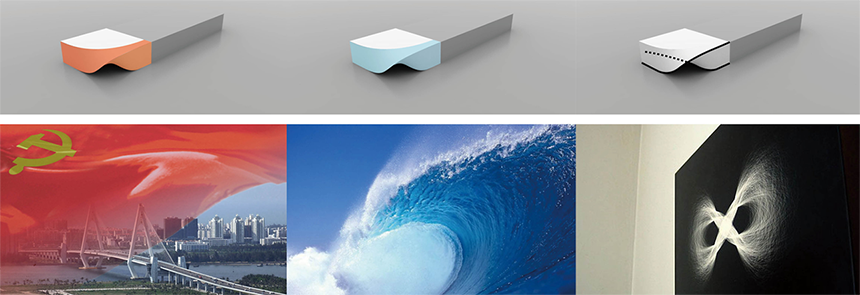
▲Symbols
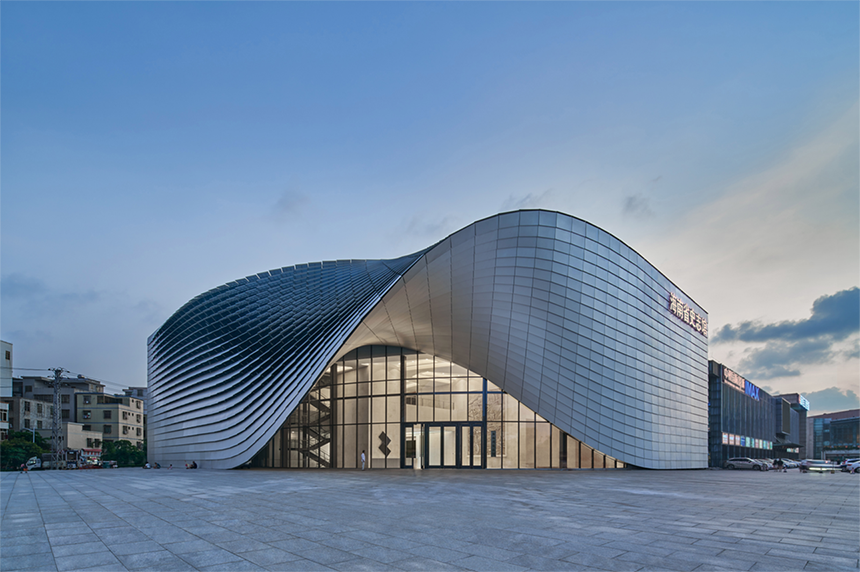
▲A real view of the entrance
The skins on both sides of the twisted curved body have a unified order but also agile changes. The aluminum plates of the linear standard units are neatly assembled along the flow direction of the curved surface on the west facade, and slowly lifted up to the roof as if being blown by the wind on the east facade. The lifted aluminum panels gradually evolved into sun visors, which not only provided natural lighting, but also let the internal lights shine out at night to outline the wavy and dynamic shape of the Shizhi Pavilion. The lines flowing along the surface of the shape further strengthen the dynamic shape of twisting and rolling, and the rich texture of the skin makes the architectural shape more light and agile.
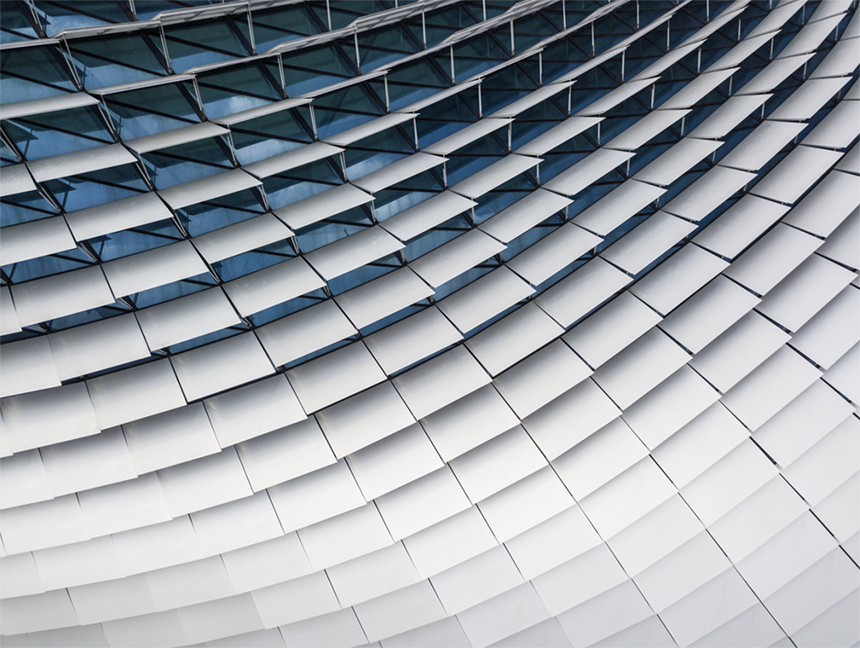
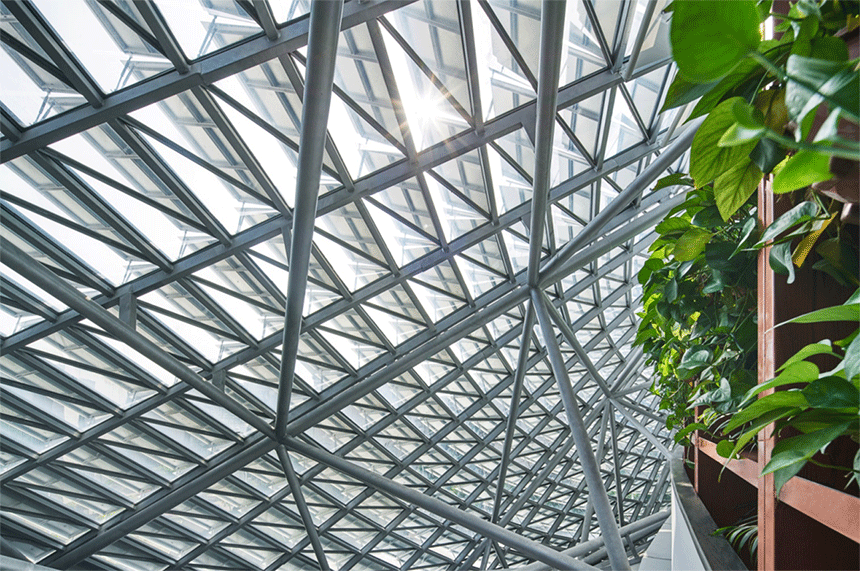
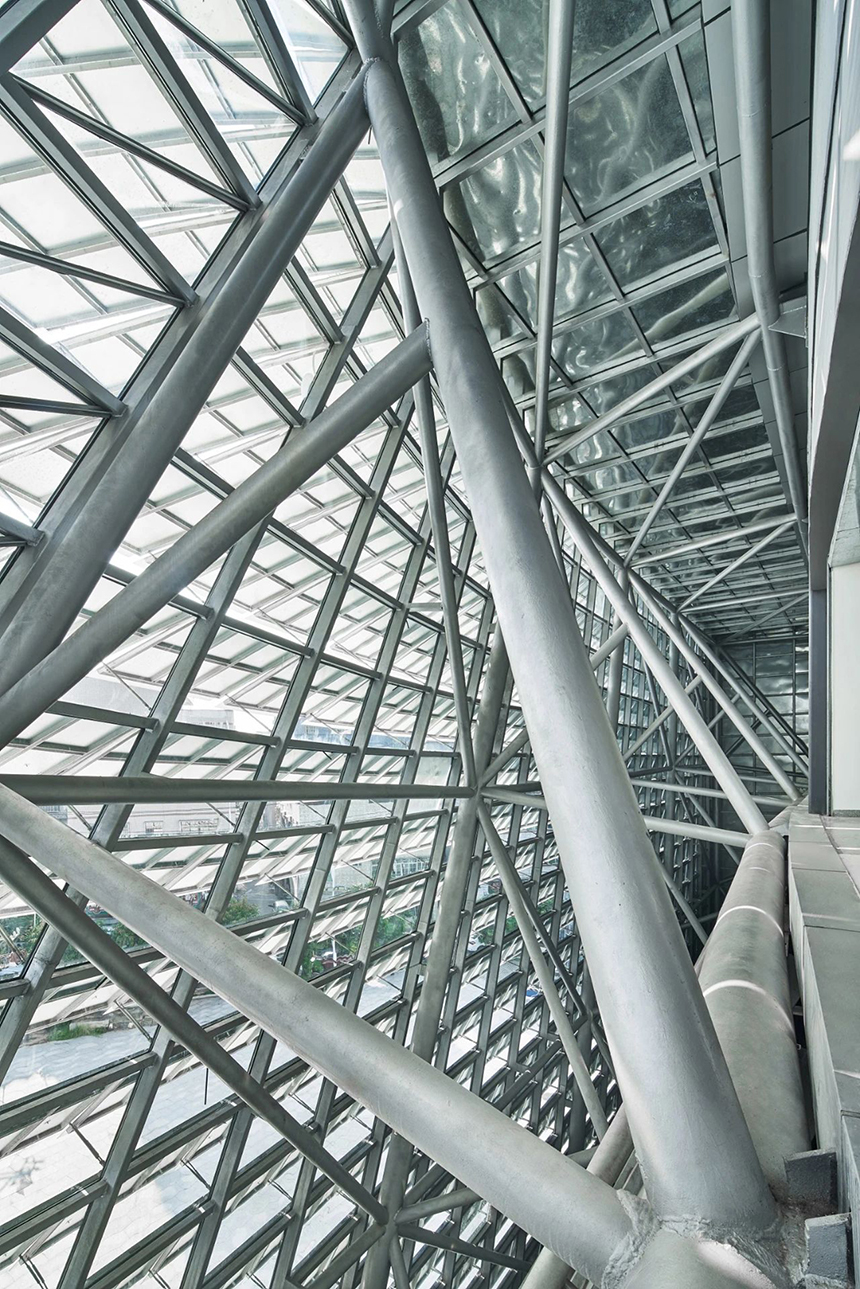
▲Real picture
The public square formed by the retreat of the northeast corner facing the museum has become the focal point of a gathering of people. The huge opening formed by the twisted curved shape here creates a dramatic entrance for the building itself-the public square follows the curve of the canopy and The spacious foyer is connected, which naturally leads people to the interior of the building.
Walking into the entrance hall, a full-height exhibition wall is set at the end. The huge mural extends to the first floor. The exhibition hall is set up around the atrium where the mural is located. The circular path of the visit echoes with the shape. Every time, the audience will be brought back to the central shared space, where they will see part of the atrium exhibition wall-the participants need to travel through the various floors of the building to see the full content of the mural in detail. This design not only resolves the sense of claustrophobia on the basement floor, but also provides a continuous and overall visual connection for the audience, which adds interest to the visit.
The top floor is equipped with research exchange and reading space. The natural light introduced by the skylight provides uniform lighting for the reading space, creating a good research and reading environment.
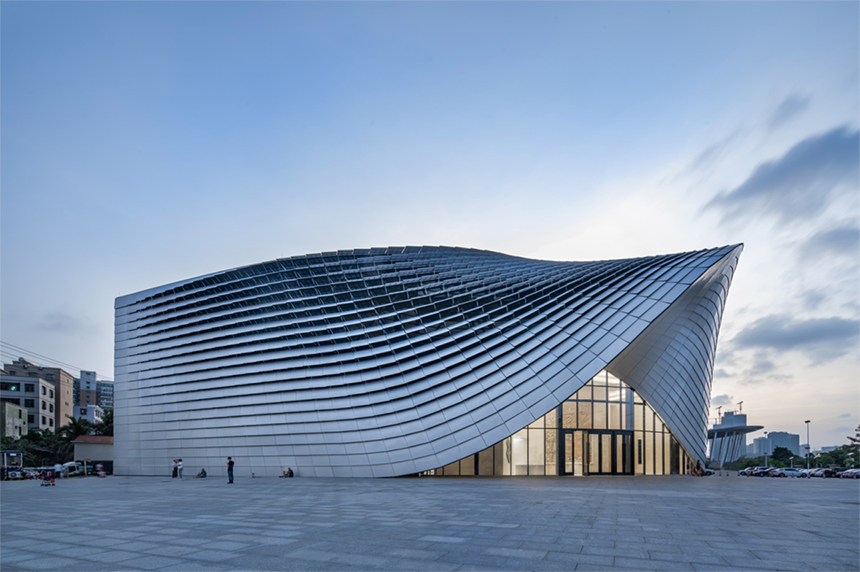
▲Real picture
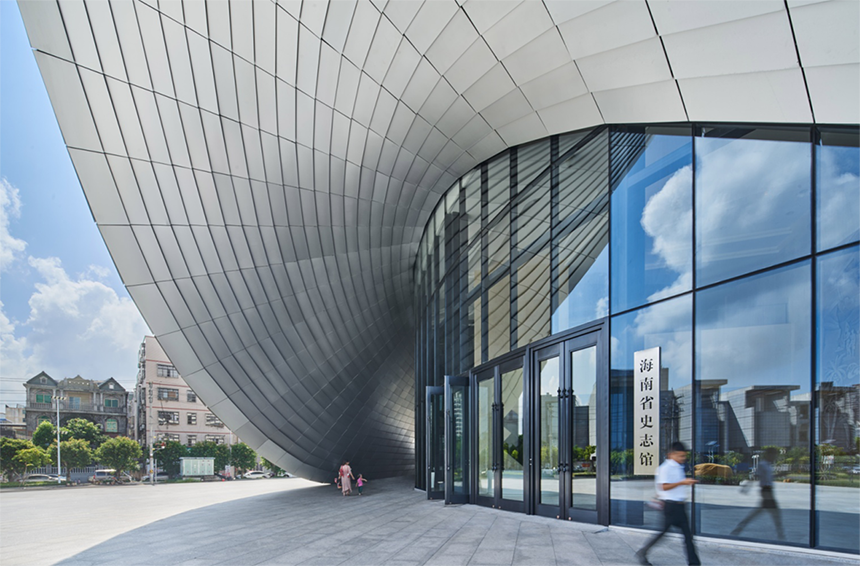
▲A real view of the entrance
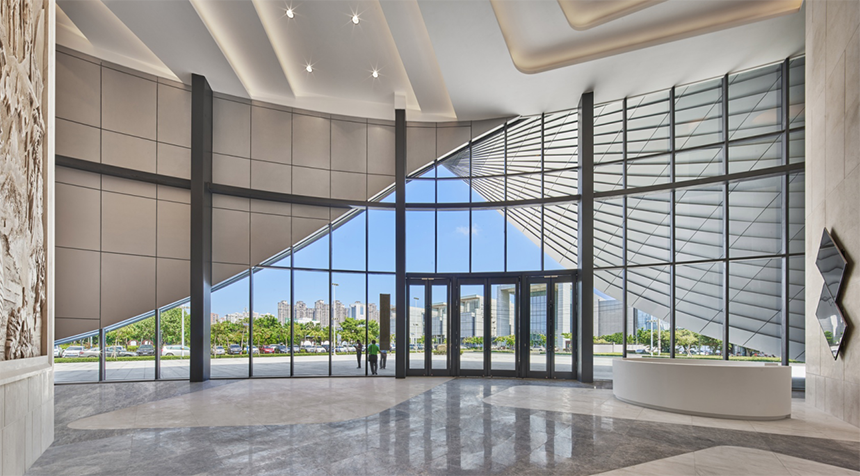
▲A real view of the foyer
The design starts from the city and does not limit the focus on the project itself, but seeks to maximize the value of the site in the urban environment. Free and flexible forms and clear and powerful lines constitute dynamic geometric aesthetics. Form, structure, space and function complement each other in a unified context, and finally present a pure and powerful city image that is integrated.
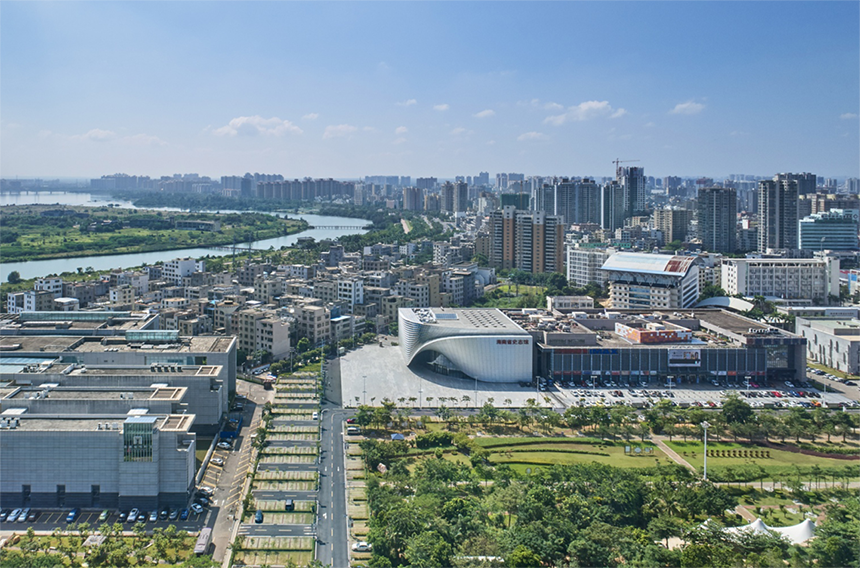
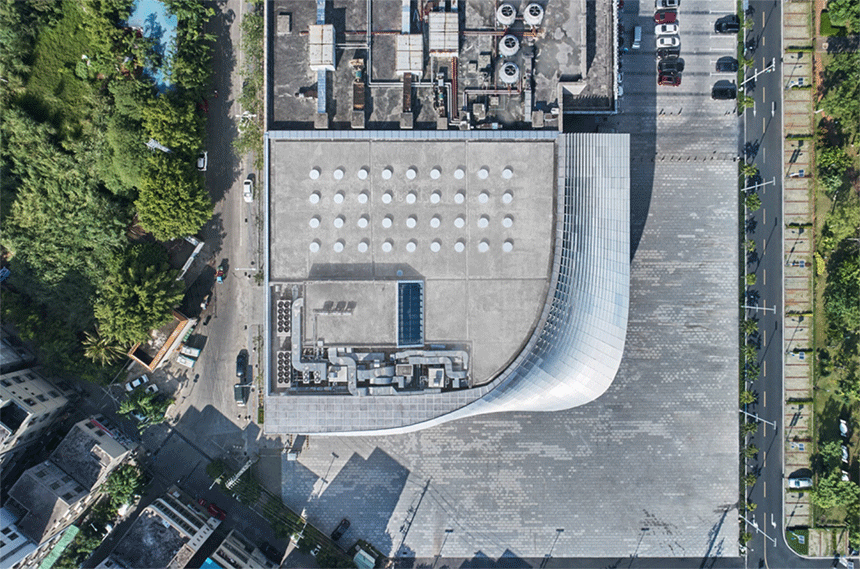
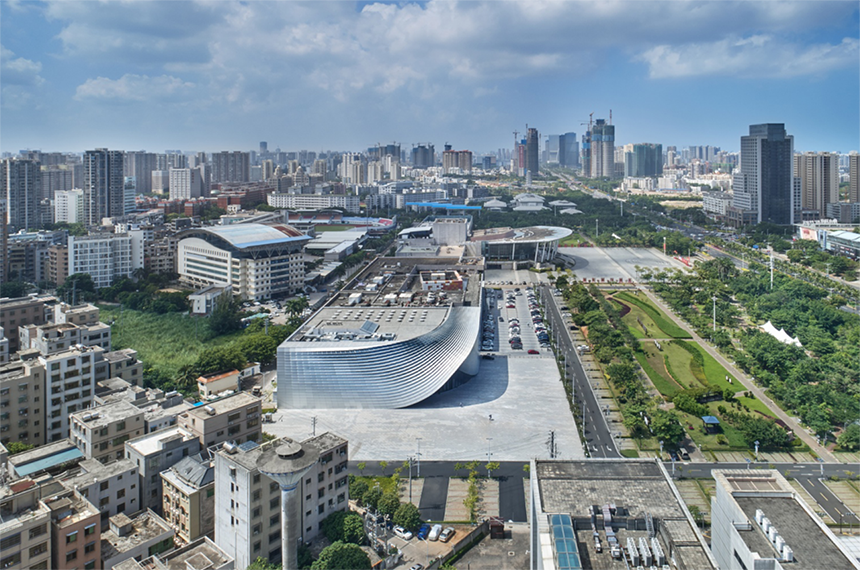
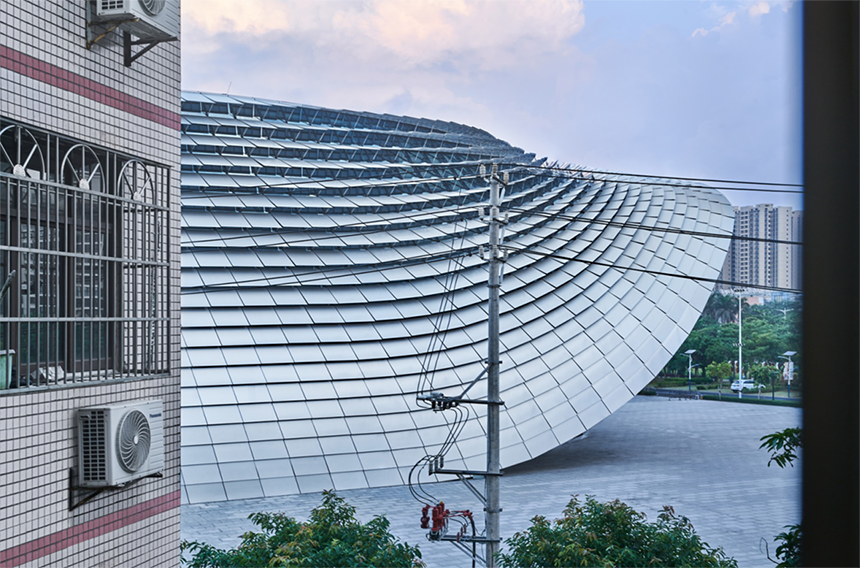
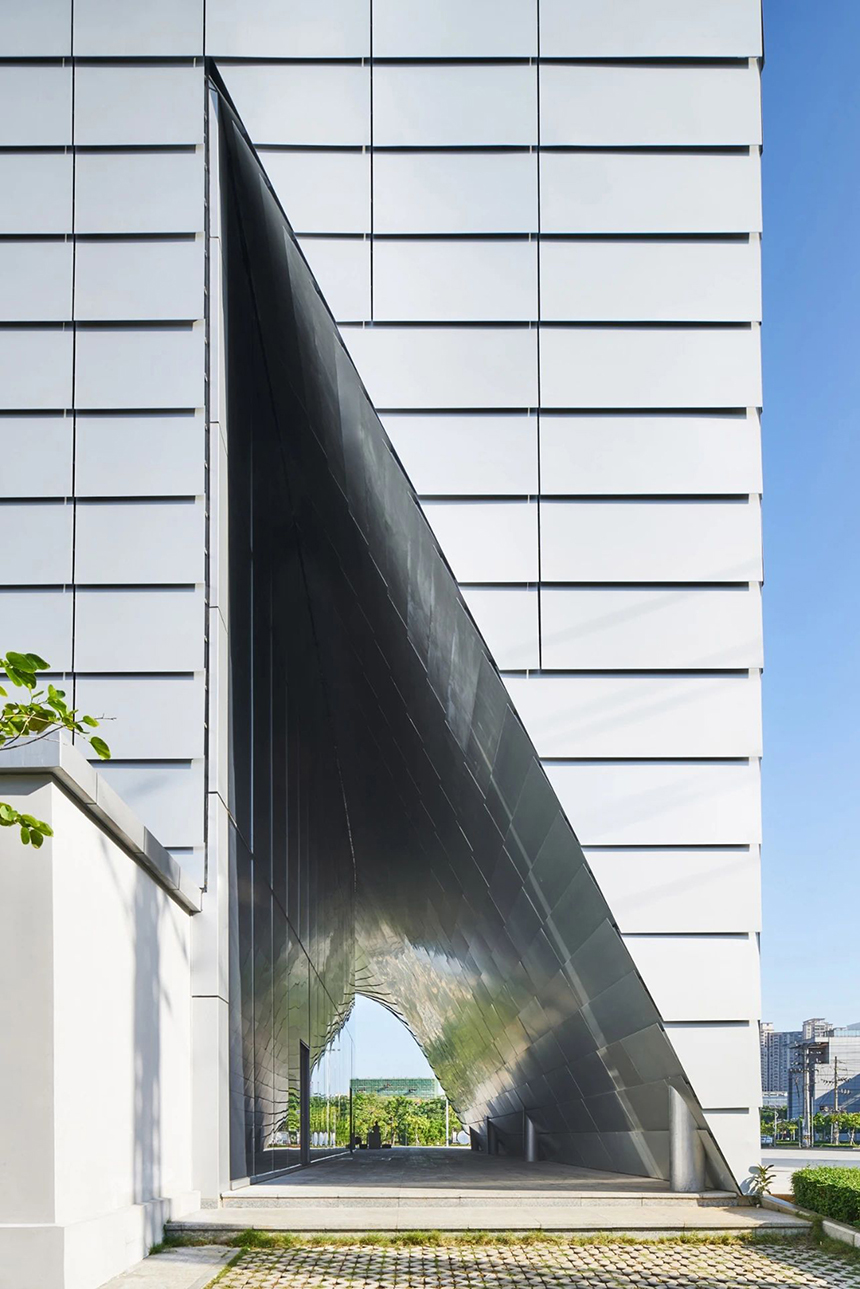

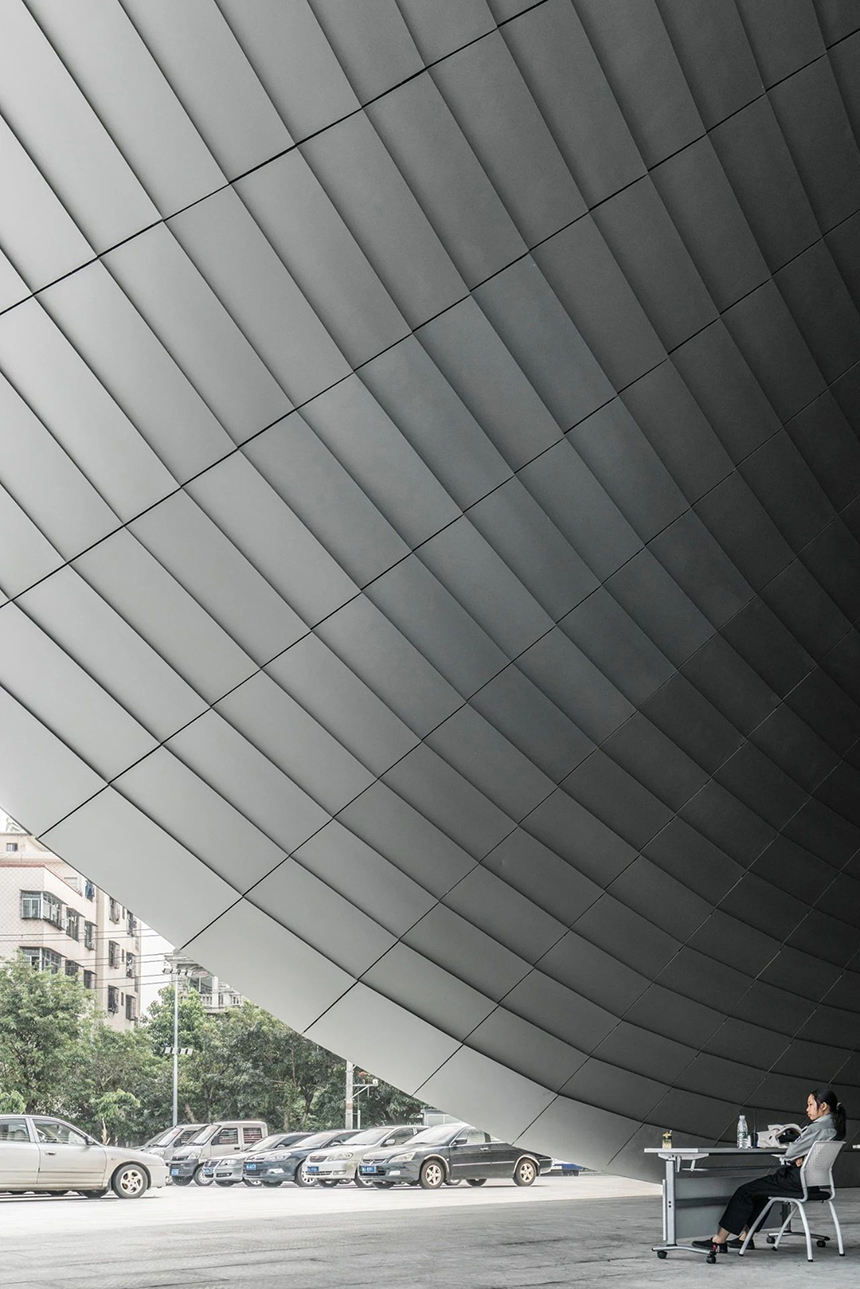
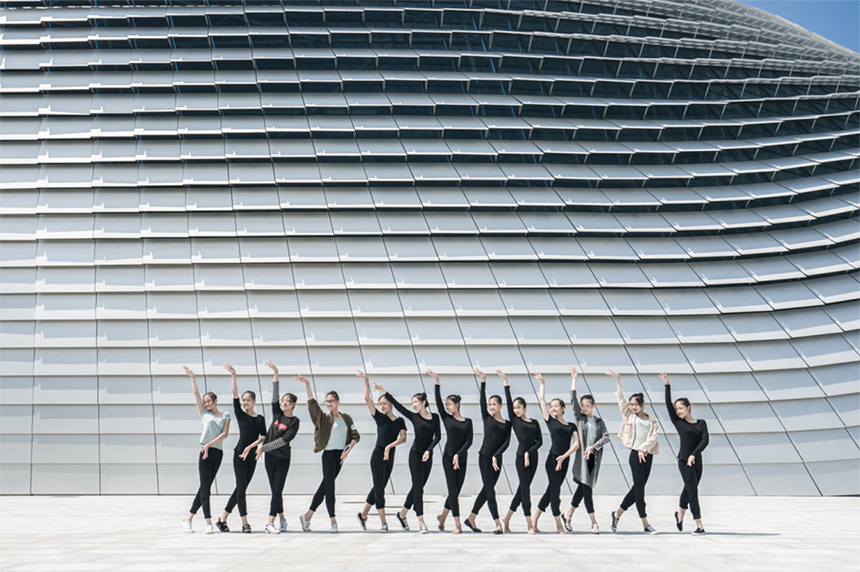
▲Real picture
Project Name: Hainan History Museum
Project address: Haikou City, Hainan Province
Project function: exhibition
Building area: 9,000 square meters
Completion time: 2018
Project status: put into use
Project chief: Feng Guochuan
Design team: Aaron Robin, Gao Jingjing, Wang Yanzhi, Xu Yi, Zhang Junli, Deng Hua, Sheng Zhaoxin